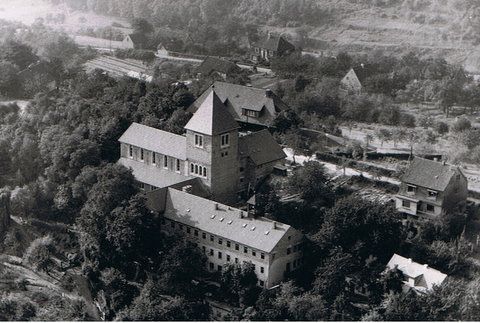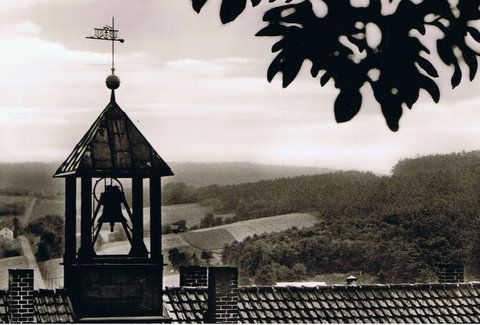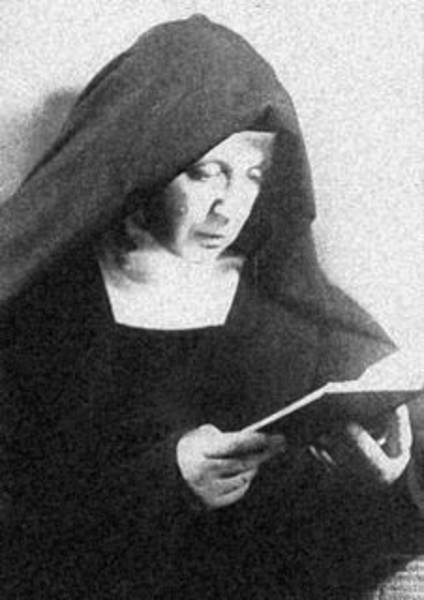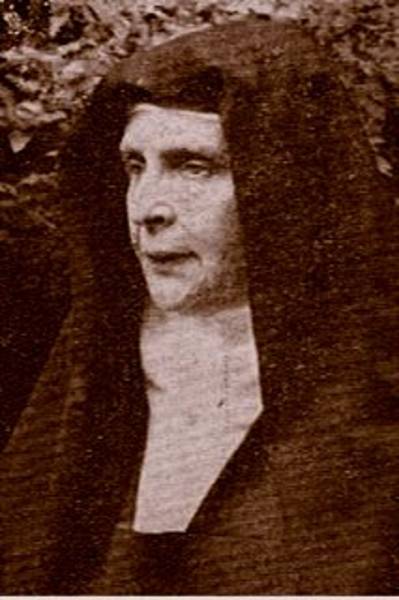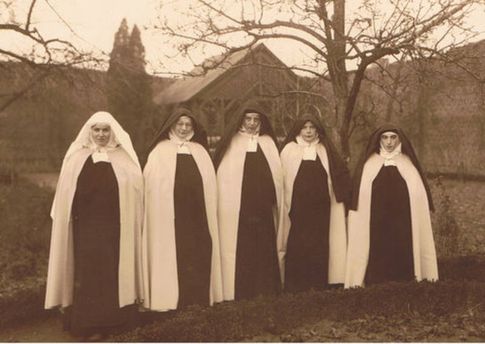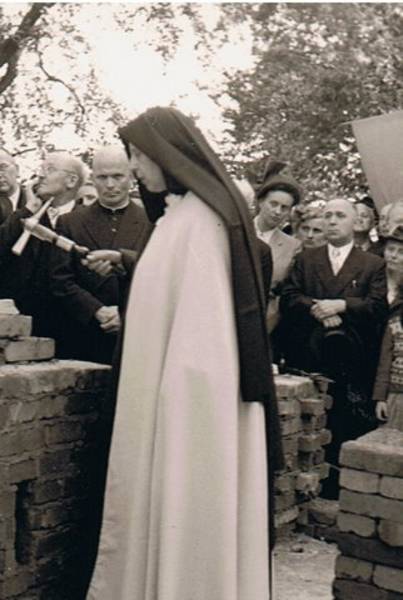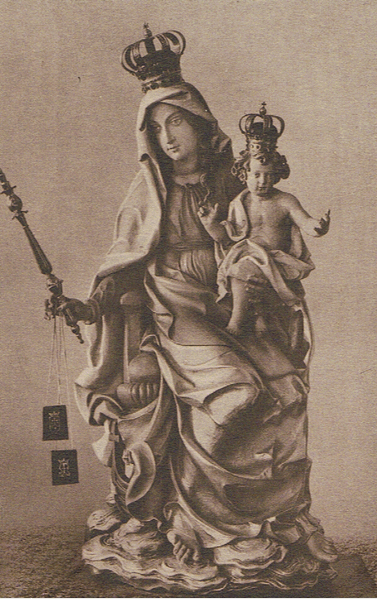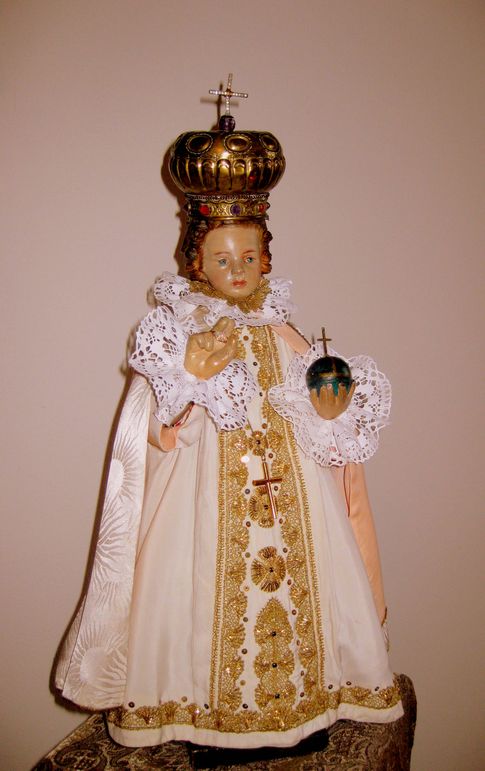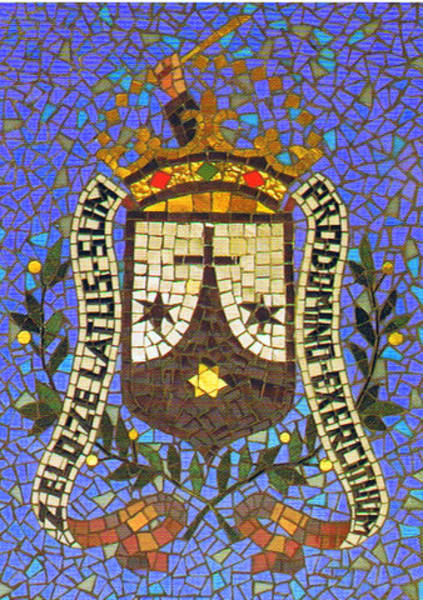History
The Monastery
The Founding of Carmel in 1933
The history of the Carmelite monastery begins not with its founding in 1951–1952 in Witten, but even earlier – in 1933 in Breslau (currently Wroclaw in Poland, Silesian region). In early December of that year, Mother Marianna de Deo (Countess Prashma) and Mother Marie-Elisabeth a Jesu (Leopoldina Countess Stolberg-Stolberg) with several sisters arrived to Breslau from Cologne. They rented a small house and fixed it up and in December founded the eighth temporary Carmel. In 1934, Prelate Lange blessed the cornerstone laid in the foundation of the monastery, which was built in two stages – in 1935 and 1937.
During the Second World War in 1941, the then government forced the sisters to leave the monastery in 24 hours. For five years they lived in temporary shelters in Wroclaw and in 1946 were driven back to the West. They sheltered in Neuburg at the Kammel River until finally the Carmel was built on the Ruhr River in Witten in 1952.
In laying the cornerstone of the monastery in Witten on July 13, 1952, a historical hammer was employed that was used as far back as 1641 by Emperor Ferdinand II when he performed three simple (symbolic) hits on the stone laid in the first German Carmelite Monastery in Regensburg. In 1956, Archbishop of Lorenz Jäger blessed the church. "If we could only appreciate the blessing that God sends us with each new church," said the archbishop. At the end of his sermon he thanked everyone involved in the construction of the church. (Witten newspaper: Wittener Stadtanzeiger, Monday, November 19, 1956).
Our Carmel blessed by Mary, Mediatrix of all Graces (Maria, Mediatrix omnium gratiarum). In 1671, Johann Adam von Garnier presented the image of grace – a statue of the then Carmelite monastery in Groß Strenz. Sculptor B. Tschötschel restored the statue. Up to the expulsion of the Monastery on January 23, 1941, it belonged to the Carmel in Breslau. Unfortunately, the statue has been missing since then.
History
The Order
Order of the Discalced Carmelites
Carmelites (Ordo Latin Carmelitarum Discalceatarum OCD) – founded by Teresa of Avila, also known as Teresa of Carmel – is a papal rights Order that is a reformed branch of the Order of Carmel that emerged in the sixteenth century.
The Carmelite Order was founded at the end of the XII century at Mount Carmel in Palestine in current-day Israel on the west side of the Carmel Mountains. In those days crusaders and pilgrims who had fought for the Holy Land for Christianity, settled at Elijah's Spring to live like the Old Testament prophets and hermits.
After the expulsion of the Saracens in the XIII century they arrived in Europe and in 1452 were officially recognized as Carmelites. In 1471, the Carmelite Johannes Soreth created an order of nuns. In the XVI century, Teresa of Avila, along with John of the Cross were able to reform the Order and give it a new form.
Today, Carmel Teresa is a worldwide community. In addition to priests and brothers (First Order) and sisters (Carmelite Second Order), the Order has been joined by numerous congregations with diverse goals and objectives, as well as several secular institutions, the community of Teresa of Carmel and the Scapular Brotherhood.
History
Coat of Arms of the Order
Coat of Arms of the Order
The first coat of arms of the Order was found in 1499 in the vexillum carmelitarum (“flag of the Carmelites”). In the center-top Mary, the Mother of God, is depicted sitting on the throne as the Virgin of the Apocalypse with a sickle moon and twelve stars underfoot. At the bottom is a stylized Mount Carmel. The emblem is complemented by ribbons with writing on them. Around the middle of the XVI century the prophets Elijah and Elisha appeared on the coat of arms. Since 1595, the Blessed Virgin Mary and the prophets take their place on the mountain, the pointed tip of which divides the coat of arms into three parts. Each part is decorated with a star: the middle star symbolizes Mary and the two on each side the prophets. Around this time there appeared on the coat of arms a ribbon with the words of the prophet Elijah: “Zelo zelatus sum pro Domino Deo exercituum” (“With persistence I have been zealous for the Lord God of Hosts”). Also on the coat of arms was a hand holding a flaming sword and crown, as well as twelve stars. The coat of arms depicting a stylized cross and mountain peak has since the XVII century been a symbol of Teresa of Carmel. The sides of the coat of arms are white and the middle part is brown. The colors represent the clothing of the Carmelite Order – a brown robe with a white cloak.
Scapular
What is a Scapular?
The Latin word "scapularium" ("clothing on the shoulders") is a wide swath of material flowing from the shoulders to the chest and back that forms a part of clothing for some orders. The Scapular of the Brotherhood, or the Third Order, is much smaller and consists of two rectangular pieces of fabric (about 4 x 6 cm) tied with two thin laces. In place of this, one can wear the Scapular as small medallions. In the XVI century, the head of the Order, Simon Stock, owing to his piety, was awarded the Scapular of the Blessed Virgin Mary. Piety quickly spread. The Brotherhood of the Scapular based on the veneration of Our Lady of Carmel has a part in the spiritual wealth of this religious family and is open to all Christians. It is a companionship following in the footsteps of Christ with Mary in the Carmelite family. Contemplation and worship of the Virgin Mary go hand in hand in Carmel. The Order sees Mary as the prototype of a contemplative praying person. The Scapular sign belonging to the Virgin Mary testifies to a distinctive lifestyle and efforts to imitate the behavior of Mary. Or in other words, “blessed are those who hear the word of God and keep it.” (Luke 11:28)

